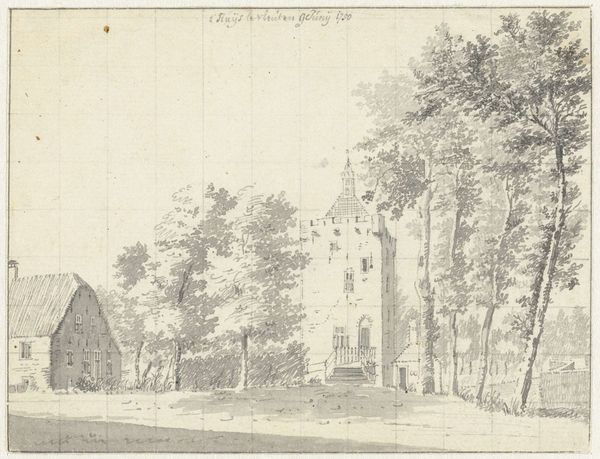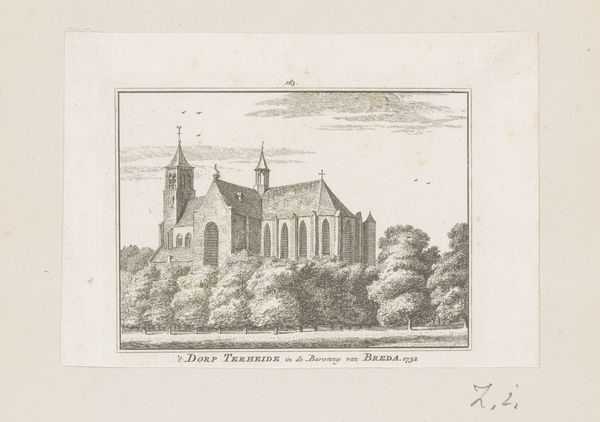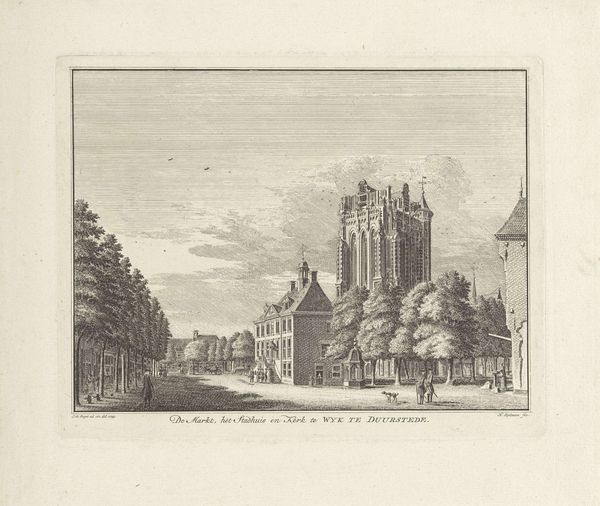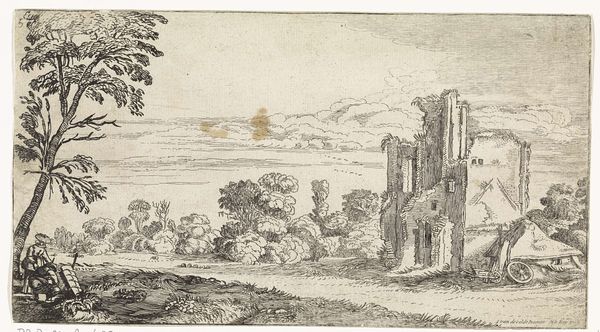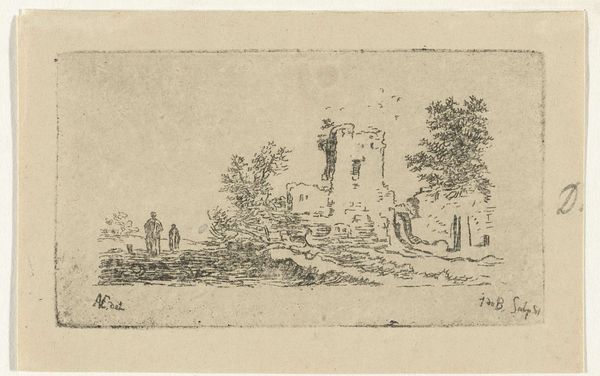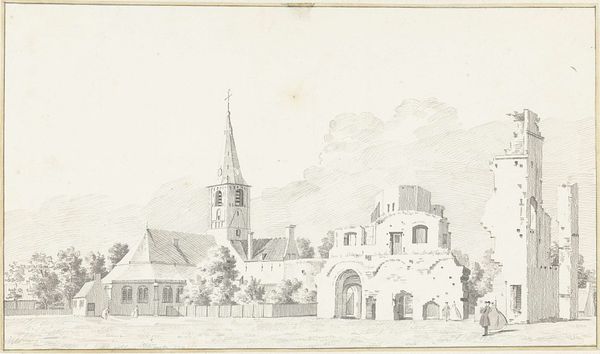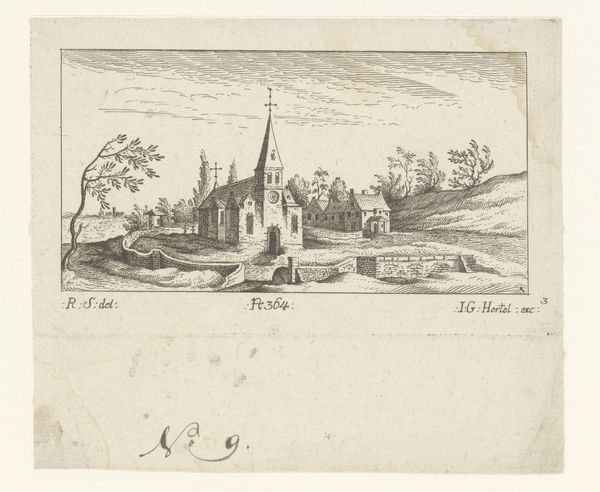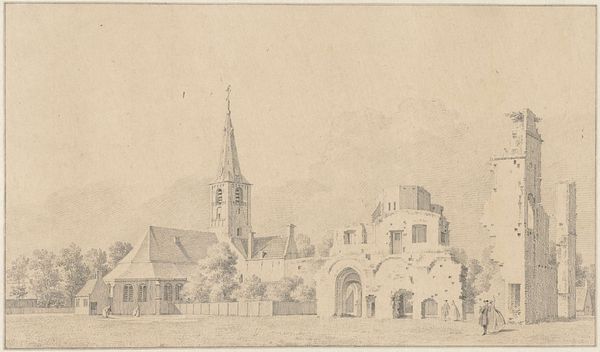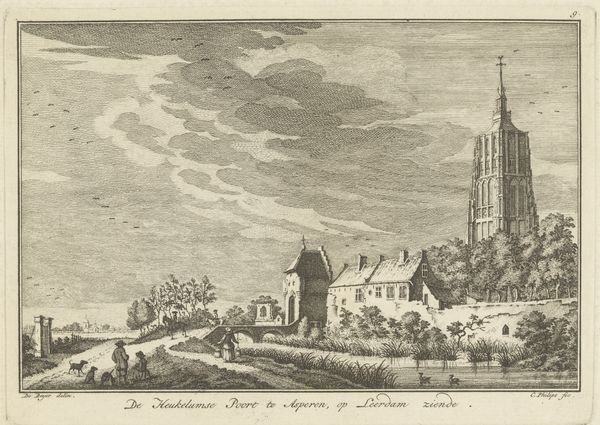
print, etching
#
baroque
# print
#
etching
#
landscape
#
etching
#
cityscape
Dimensions: height 85 mm, width 110 mm
Copyright: Rijks Museum: Open Domain
Curator: Here we have Hendrik Spilman’s etching, "Gezicht op de kerk van Brielle," dating back to 1757, Baroque in style, currently housed at the Rijksmuseum. Editor: It feels a little... wistful. Something about the delicate lines and the way the church almost melts into the sky evokes a kind of peaceful melancholy, what do you make of that? Curator: That aligns interestingly with its historical context. Spilman often imbued his cityscapes with detailed precision. The lines, as you mentioned, are indeed delicate. They follow the classical structuring prevalent in Baroque-era art. We can see his efforts to illustrate a detailed picture of the location, not necessarily of his feelings, wouldn't you agree? Editor: Maybe... I tend to believe we are always putting our feelings, intentionally or not, into our art. It is clear how Spilman used the horizontal lines, which create a flattening, almost dizzying, effect that softens the details. And yet, in contrast, the imposing vertical lines of the church cut the landscape, giving a feel of authority and dominance. To me, this etching does more than describe; it interprets. It tells a silent narrative, like most art I enjoy. Curator: True, it captures the social position of the Church against the backdrop of an increasingly bourgeois society, yet Spilman presents an objective overview of the place. If one pays close attention, he successfully marries topography with artistry to deliver accurate yet refined city views, which was customary for Baroque paintings depicting cities. Editor: Ah, so it's Spilman, in the 18th Century, presenting as a 21st Century satellite view. Still, this "marriage", as you put it, creates this very balanced dynamic, wouldn't you agree? Like the piece has so much to say, without actually making a loud declaration about it. I respect that subtlety in Spilman's craftsmanship. Curator: Yes, a balanced tension defines this particular image—a characteristic feature found in many landscapes of that era, where objectivity was crucial. It invites interpretation while remaining anchored in the observable world. Editor: Exactly! Well, thank you, I do appreciate a piece that quietly holds your hand while your thoughts take flight! Curator: Indeed. It shows that beneath the structured clarity lies an echo of human perception.
Comments
No comments
Be the first to comment and join the conversation on the ultimate creative platform.


